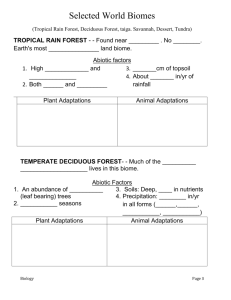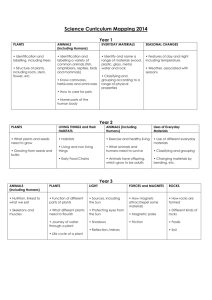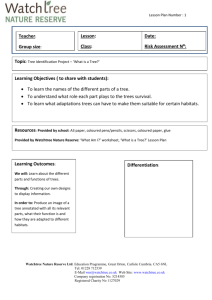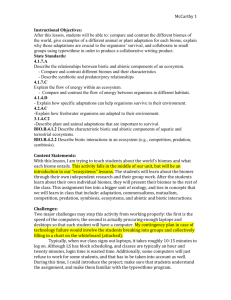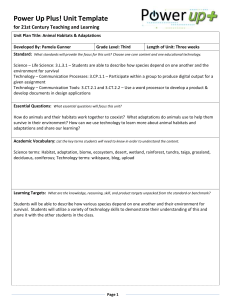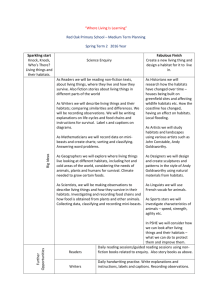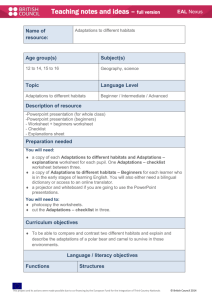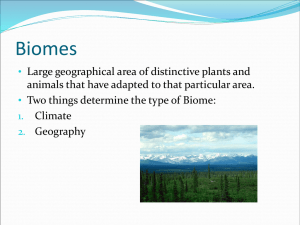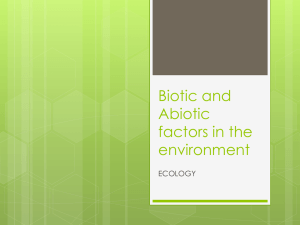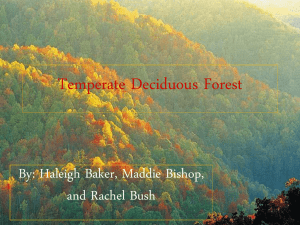Deep Sea Biome
advertisement
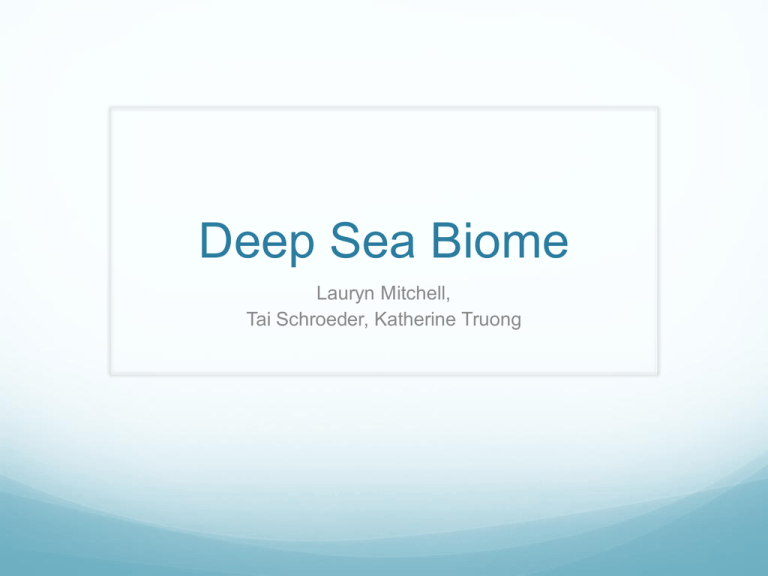
Deep Sea Biome Lauryn Mitchell, Tai Schroeder, Katherine Truong ABIOTIC Factors: Light: Very dark/ no sunlight Temperature: 2-4 degrees Celsius Pressure: ranges from 20atm to over 1,000atm Oxygen: oxygen-poor environment Turbidity: High, lots of sediment Nutrients: A lot (mostly from dead organisms) BIOTIC Factors: HUMAN INTERACTION Deep Sea Trawling: -Reduces the biodiversity -Destroys the coral reefs -Ruins habitats -Takes away soil nutrients -Over fishing Offshore Oil Drilling: -Destroys habitats - creates potential risk of oil spill (BP) -Beached Whales (sonar hurts ears) -Ruins deep sea coral Adaptations: PRODUCERS Bacteria: -use volcanic vents -hydrogen sulfide -tube worms Deep Sea Plankton: -flat bodies and spines Deep Sea Coral: -attach themselves on a solid surface -rely on ocean current -grow tall to catch krill and other food Adaptations: CONSUMERS Anglerfish: -reproductive adaptation Fang tooth: -big mouth without a jaw -strong sense of smell Hagfish: -strong sense of smell and touch because of bad eye sight Tundra Biome ABIOTIC Factors -Strong winds -Rainfall -Permafrost -Soil -Short summer days and long winter days BIOTIC: HUMAN INTERACTION Air Pollution/ Smog: -Contaminates the lichen which provides food for many animals in the tundra - decreases biodiversity -Destroys habitats Oil, Gas and Mineral Exploration: -Ruins habitats -Creates a risk of an oil spill -Disturbs the physical landscape as well as the ecosystem Adaptation: PRODUCERS • Furry or waxy coating on leaves - resists cold and wind - ex. Woolly lousewort • Retains dead leaves - protect against wind and cold • Low growing - stays out of wind chill - ex. Bearberry Adaptations: CONSUMERS • Feathers/Fur - reduces heat loss/ resists cold - ex. Ptarmigan • Short appendages - reduces heat loss/ resists cold - ex. Arctic Fox • Alaskan blackfish - can lower the freezing temperature of its cell fluids
